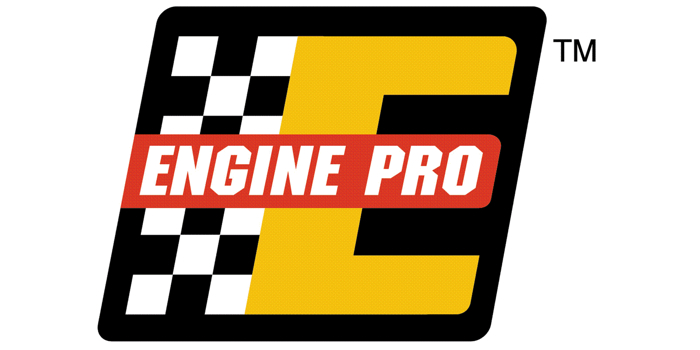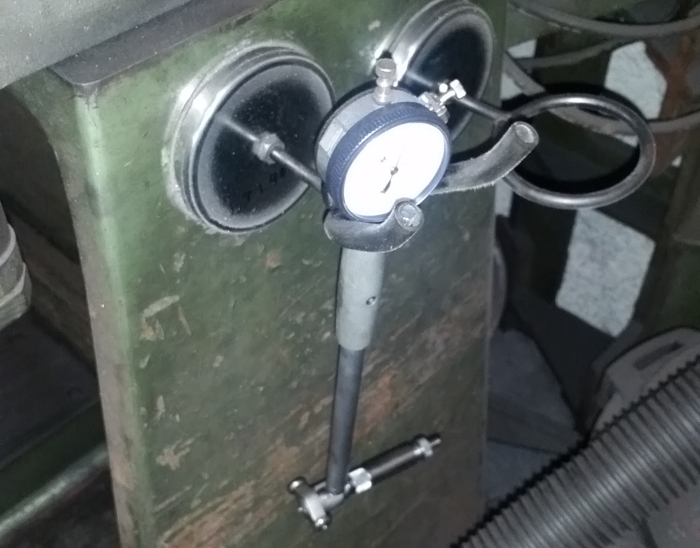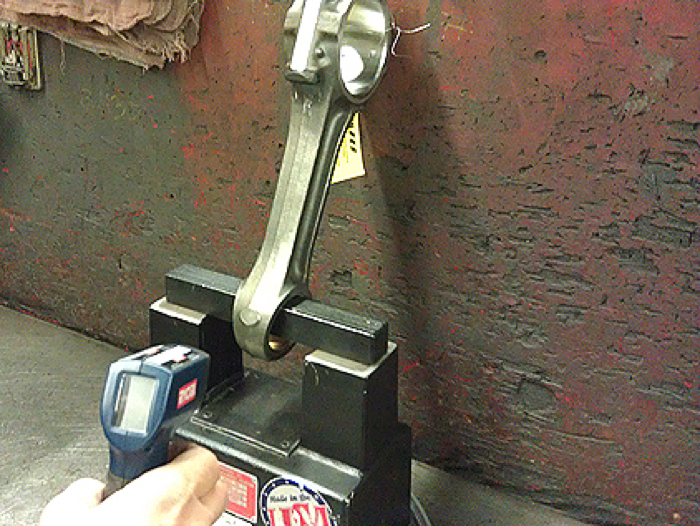Removing Dry Sleeves
Removing dry cylinder liners by pressing them out can require a lot of setup time.
Using your boring bar, offset the centering with a .030˝ feeler gauge on one finger. Line up the offset so you can view your cut. Set the bit by letting it slide out to liner. Start with a light cut making a full-length pass down the cylinder.
Using your bar mic, work on out-in light cuts until the sleeve is very thin. Once you have it as thin as you’re willing to go, push a rounded edge screwdriver – nothing sharp – behind the liner, breaking through it, taking care not to damage the parent bore. Now it will slide right out.
Darrin Anderson
Sterling Bearing Inc.
Kansas City, MO
Dial Bore Gauge Holder
Boring bar stands don’t have any place for holding your dial bore gauge. I bought a magnetic spray gun holder from a paint and body shop supply store. I stuck it on my stand as you can see in the picture and now that gauge is right where I want it. This can be useful on many machines for holding additional tooling where you need it.
Steve Potz
Steve’s Engine Shop
Cocoa, FL
Growing Aluminum
We live in a time where aluminum blocks with cast-in sleeves are common and we still need to remember to account for how different metals behave.
We build several dozen Gen III and Gen IV GM LS type motors per year. We finish our cylinders .001” tighter on the aluminum block engines to compensate for the additional growth when the block gets up to operating temperature.
This is easily tested. Check your cylinder diameter just before and right after removing from your jet washer. The difference between the aluminum and iron blocks is measurable, and this is only at about 135 degrees (much lower than engine operating temperature).
Cam bearing interference can also be a problem on the aluminum blocks. We always use the new late model cam bearing set developed for the engines with variable cam timing. The diameter is approximately .0005” larger and the added width increases surface tension.
Tim Schwanke
Schwanke Engines LLC
Springfield, MN
Tapered Rod Pin Bushings
Pin bushings require about the same amount of interference fit as a piston pin. The same rod heater you use to fit pins can be useful with certain pin bushings.
Tapered rods can be very difficult to remove and install bushings in and usually require some custom made or special tooling. By heating the small end of the connecting rod in your rod heater you can expand the rod enough to make removal easy with drift, socket or piece of rod without hurting the rod bore.
Installing tapered bushings is just as difficult and they’re often damaged during installation. By heating your rod end, starting the bushing is much easier and less likely to damage the rod or the bushing.
Miles Rogers
BP Rods
Magnolia, TX
GM Damper Upgrade Cautions
People often use the early Chevrolet V8 6-1/8” diameter harmonic damper as a lightweight performance upgrade to the 6-3/4” and the 8” dampers on the later, longer stroke engines. Though no horsepower will be gained by lightening the rotating mass, quicker acceleration of the engine is reported.
Problems with this mod may not be the fault of the cautious engine builder, but of the DIY’er who makes the change to the engine on his own. The timing mark on the early (1967 and older) balancer is 12 degrees off from the later (1968-on) engines. If a different timing marker is not used on the timing cover, this can be enough to cause serious damage to the engine. An additional 12 degrees of advance, on top of what might be an out-of-tune motor, will cause severe detonation and damage to pistons, rings, valves and rod bearings.
A 6-1/4” balancer used on the 327 engines in some G-series vans around 1968 and ‘69 does have the correct markings, but these are very hard to find. Aftermarket performance 6-1/8” diameter dampers all seem to have the 1968-on timing mark placement, which potentially could cause a problem if used in an early application.
GM went to an 8” balancer on its high performance small block V8s for a reason. Cracked crankshafts and several other harmonic or vibration induced problems seem to have been corrected with the heavier, larger diameter units.
Engine Pro Technical Committee
















